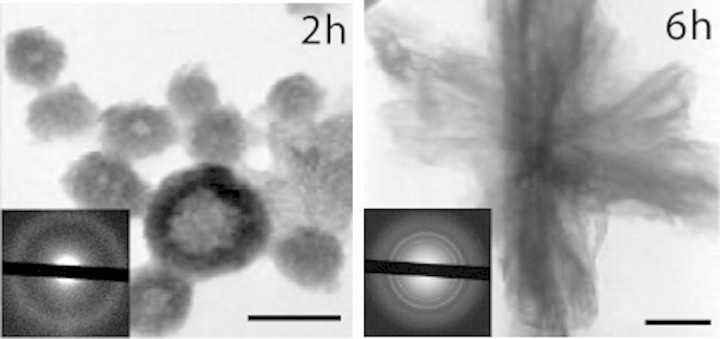Fig. 3.
Electron microscopic picture of synthetic CCPs [22]. The CCPs initially have a diameter of 30–150 nm (2 h, 37°C) and are amorphous as shown by diffraction analysis. Nextly, the CPPs are transformed, dependent on temperature, mineral ion supersaturation and fetuin-A concentration, into larger and crystalline mineral particles [23]. These particles are still soluble until ∼24 h at 37°C. Similar particles have been detected in ascites of patients with sclerosing calcifying peritonitis [24]. Scale bars represents 100 nm. This research was originally published in [22] © the American Society for Biochemistry and Molecular Biology.

